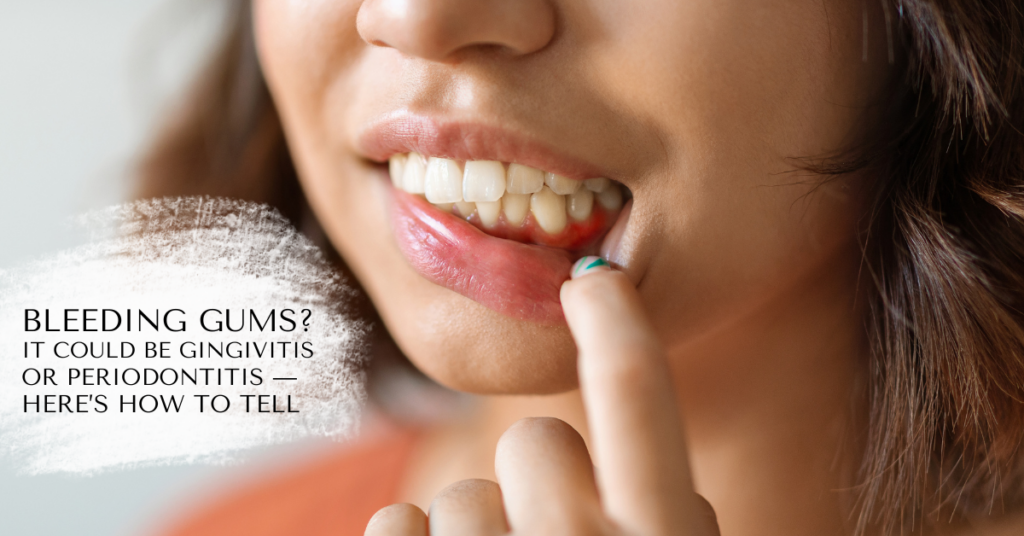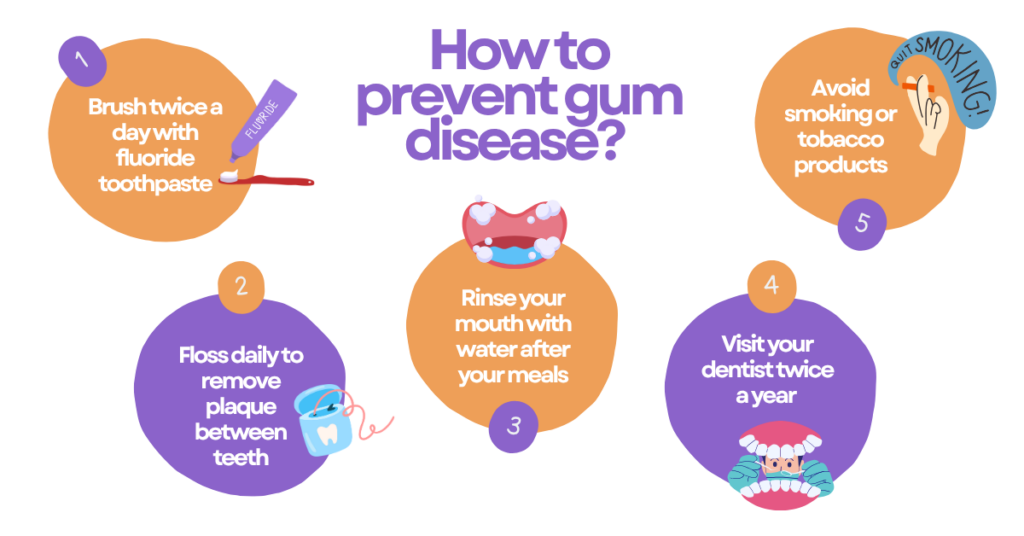Article reviewed by:
Dr Daylene Leong • Periodontist

Gum disease is one of the most widespread oral health problems globally — and Singapore is no exception. A national survey conducted in 2019 revealed that over 56% of adults in Singapore suffer from moderate to severe chronic periodontitis.
But gum disease doesn’t start there. It typically begins with gingivitis, a milder and reversible stage of the disease. Though these conditions are closely linked, they differ in their symptoms, severity, and treatment approaches. Understanding the difference between gingivitis and periodontitis can help you take action early — and protect your smile for life.
Table of Contents
What Is Gingivitis?
Gingivitis is the earliest stage of gum disease. It occurs when bacterial plaque accumulates along the gumline and causes inflammation.
Common Symptoms of Gingivitis
- Red, swollen gums
- Bleeding during brushing or flossing
- Bad breath
- Tenderness in the gums
The good news? Gingivitis is reversible with proper oral hygiene and regular dental cleanings. Early diagnosis and treatment can prevent further progression and allow your gums to return to a healthy state.
What Is Periodontitis?
Periodontitis is a more advanced and severe stage of gum disease that can develop when gingivitis isn’t treated. At this point, the inflammation extends deeper into the gums and begins to damage the bone and connective tissues that hold your teeth in place. Your teeth will loosen and potentially fall out.
Symptoms of Periodontitis
- Receding gums
- Loose or shifting teeth
- Deep gum pockets
- Persistent bad breath
- Bone loss around the teeth (visible on X-rays)
Unlike gingivitis, periodontitis is not reversible. However, it can be managed with professional periodontal treatment, including deep cleaning (scaling and root planing) or surgery in severe cases.
To understand more about treating gum disease, read our comprehensive guide to gum treatment in Singapore.
What Causes Gingivitis and Periodontitis?
Both gingivitis and periodontitis typically start with plaque buildup. When plaque isn’t removed through regular brushing and flossing, it can harden into tartar, which may irritate the gums and eventually lead to inflammation.
How to Prevent Gum Disease

Prevention is the best cure for both gingivitis and periodontitis. Here are a few simple but effective tips:
- Brush twice a day with fluoride toothpaste
- Floss daily to remove plaque between teeth
- Rinse your mouth with water after your meals
- Visit your dentist twice a year for check-ups and cleanings
- Avoid smoking or tobacco products
Don’t Ignore the Signs
If you notice early signs like bleeding gums, bad breath, or gum sensitivity, don’t ignore them. It could be the first sign of gum disease. Early intervention can stop gingivitis in its tracks and prevent periodontitis from developing. Book a dental check-up today to keep your gums (and your smile) healthy.
Need some dental assistance?
Drop us a text via the WhatsApp icon on the bottom right corner, enquire or call us at (65) 6733 7883.







